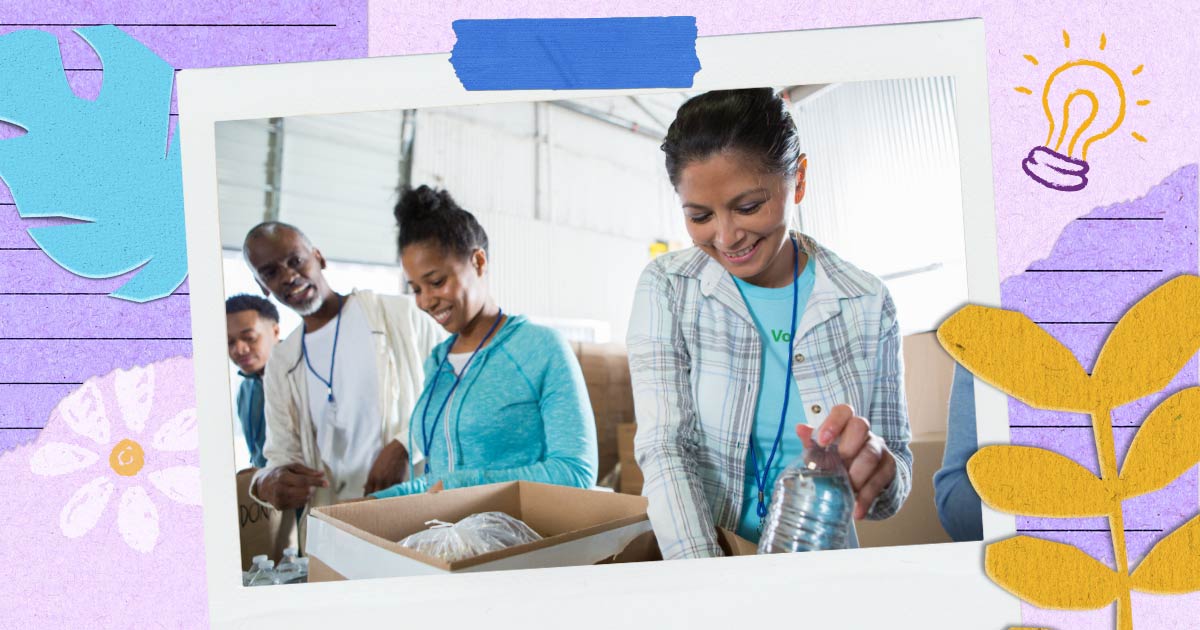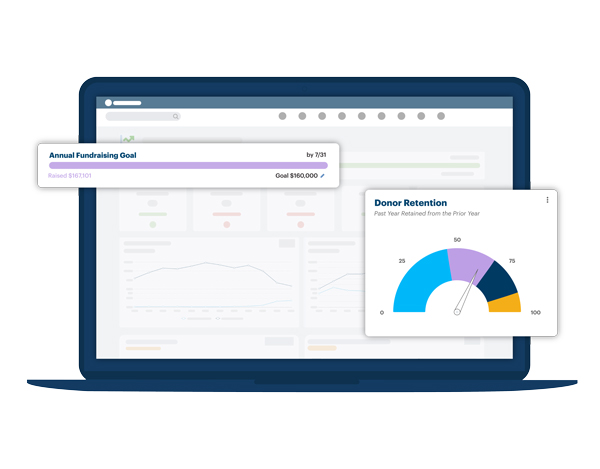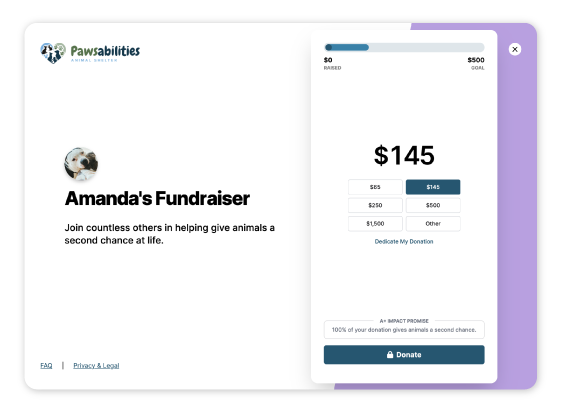Nonprofit Technology & Fundraising Blog
Subscribe to our mailing list

October 3, 2024 | GivingTuesday, Nonprofit Trends
Are you searching for creative ways to energize your community? A fresher, more flexible approach to fundraising might be just what you need!
Industry research suggests that now is the perfect time for your organization to prioritize connections, new and old, monetary or not. Nonprofit Giving Days help you build relationships based on shared values and highlight what makes your organization unique.
You might know these events as “awareness days” or “community days.” The most famous example is Giving Tuesday, a global generosity movement involving millions of donors and nonprofits each year. However, standing out in a sea of causes can be challenging. Let’s explore how Giving Days can help you rally your ideal audience!
Fundraising events are your mission’s opportunity to shine its brightest. Nonprofit Giving Days grant you the creative freedom to spotlight your strengths and forge connections that will sustain your nonprofit for years to come.

Note: Some organizations host their own event, and some participate in an existing giving day. For example, a foundation may host a community day and invite local organizations and businesses to participate.
Events tailored to your organization, cause, or location allow you to prioritize new connections and deepen existing relationships with dedicated constituents.
Expert analysis of the past two years suggests that embracing the full spectrum of generosity (including volunteers and advocates) can help you overcome common obstacles like donor churn and gift declines.
Right now, relationship-building is crucial for all nonprofits, as donor counts have been down across the board, including new, newly retained, and repeat-retained donors.
Giving Days can help you reverse this trend in two steps: 1) rallying like-minded people around a common goal, and 2) providing opportunities to show gratitude regardless of contribution size. More than a third of online donors who give to your organization this year will give again next year – possibly increasing their contribution or inviting a friend to participate.
Giving Days are an opportunity to add your personal touch to donor outreach, and include additional touchpoints for new and lapsed donors who might not realize the impact they can make. Research from the 2024 GivingPulse predicts that “an additional 7% of respondents would have responded generously to solicitation if they had been asked recently,” and Double the Donation reported that 1 in 3 donors would’ve given more if they knew their gift would be matched or doubled.
Volunteers are powerful influencers due to their close connection to your mission. Even when donation rates dip, volunteers remain committed. Early in 2024, while monetary donation rates were at their lowest, volunteers made up over half of all remaining donors.
Many Giving Days take place online, allowing you to host or participate in 24 hours of excitement through giving challenges, social media storytelling, regular impact updates, beneficiary spotlights, or whatever fits your current bandwidth. You can maximize limited resources by analyzing past campaigns to see which communication channels and giving methods perform best.
If you have limited time or staff, the flexibility of Giving Days allows you to allocate them appropriately without overwhelming your team. Plus, there’s no pressure to raise a million dollars right away. Increased awareness is a great goal for your first year, and it’s easily measurable, so you can track progress as your event grows.

With comprehensive fundraising software like DonorPerfect, one system can encompass every tool you need to bring your campaign to life! For example, you can:
The people who participate in your Giving Day don’t have to choose from a long list of different causes to determine where their charitable allowance will go. They’re empowered to invest their time, money, or influence in a single cause or community – yours!
This makes their efforts more personal, intentional, and impactful because they have chosen to participate based on shared values. Even if several causes are represented at your local Giving Day, the common goal is to uplift your community, so everyone is still contributing to the same end.
Let’s get creative! Last year’s Fundraising Effectiveness Report shows that even during giving declines, smaller organizations still performed relatively well compared to larger ones, highlighting the opportunity for every nonprofit to hone its unique area of expertise.
Your organization may have community connections or creative freedoms that others don’t. You may take a more hands-on approach, have deeper volunteer involvement, or have a more close-knit team than others. Giving Days are a flexible event model that doesn’t require specific activities or protocols, so take advantage of what makes you special!
The greatest benefit of strong community support is your closeness to volunteers, advocates, and other fundraisers who share the same goals. People who are familiar with your work are more prepared to participate and spread the word. Plus, you can generate more interest in your Giving Day by engaging their networks.
Your engagement doesn’t have to stop with your constituents or peers. Are there other community figures who share your values? Giving Days present an opportunity for local leaders to address local challenges – and for you, it’s an opportunity to leverage their networks to encourage participation from businesses, educational institutions, and more.
Behavioral psychology tells us that donors are motivated by the desire for validation within their communities. “Social proof,” a term coined by a psychologist specializing in influence, explains why people act similarly to those who influence them. Your donors want to feel a sense of belonging and recognition from their peers – and their friends, family, and colleagues are likely to follow suit.
Social proof turns their participation into a shared experience and their impact into a shared achievement. By creating opportunities for your Giving Day donors, volunteers, and advocates to share their stories, you can strengthen their influence on others.
You’ve likely heard the saying, “People give to people.” According to the 2023 Lookback Report, remittances (payments made from one person to another) are currently the largest source of charitable funds in the world, followed by individuals giving directly to charity, official development assistance, foundations, and donor-advised funds, respectively.
This suggests that there may be untapped potential in nonprofit peer-to-peer initiatives supporting an individual or group. Pain and struggle can be felt by peers and strangers around the world.

Giving Days highlight both your organizational strengths and your individual contributions. These events allow you to add your personal touch to event planning, helping you feel more connected to your campaign’s success. In other words, the flexibility of Giving Days fosters a sense of alignment between your personal responsibilities and your nonprofit’s growth.
You know your organization better than anyone, so put your ideas front and center! The same inspiration that moved you to become a leader of your mission can motivate others to make an impact. What do you all have in common? You can even share your personal story to excite that feeling in others!
According to OneCause, 40% of donors who participate in an awareness day for your cause are new donors. This is the start of their journey with your mission or organization, so it’s important to make a lasting impression.
As the Association of Fundraising Professionals (AFP) puts it: “Among non-givers, those who were solicited in the past month and those who report seeing many reminders for giving to nonprofits also report higher levels of trust, hinting that engagement, regardless of outcome, could act as a starting point for garnering trust. This is not a new insight – the history of advertising is based on this simple premise – and yet it is one that nonprofits might benefit from paying more attention to.”
Industry experts suggest that recent declines in giving could be caused by a lack of diversity in fundraising. People are still eager to help, but they aren’t being engaged in the right way – or they aren’t being engaged at all. Many important groups remain overlooked due to their lack of monetary contributions or the size of their donations – disregarding their potential to volunteer their time, advocate for your cause, or invite a friend to your event.
If you make the effort to connect, they could become dedicated donors someday. Even something as simple as chatting about your plans at a coffee shop can help you spread the word to people that your emails won’t reach.
Fundraising is not a competition for dwindling dollars and scarce resources – it’s about embracing the full spectrum of generosity from volunteer hours to major gifts, recognizing that each act is a step toward a shared goal. Now is the time to prioritize meaningful connections over the money they bring in. Our free guide, Donor Engagement Models for the Digital Age, is designed to help you do just that. Download your copy below!
Follow us on social!